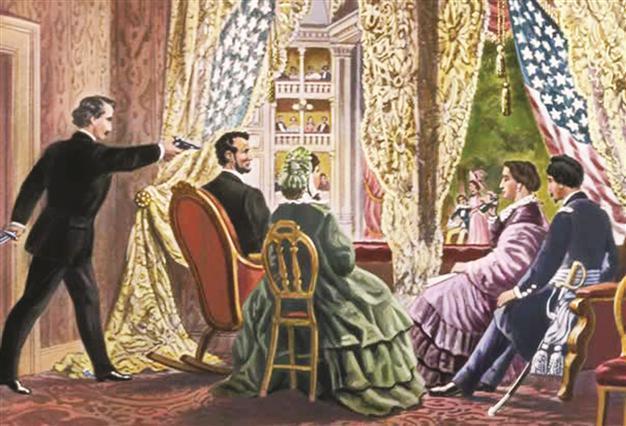Doctor report on Lincoln assassination found
SPRINGFIELD, Illinois - The Associated Press

This picture depicts President Abraham Lincoln when he was shot in a theater.
The first
doctor to reach President Abraham
Lincoln after he was shot in a Washington theater rushed to his ceremonial box and found him paralyzed, comatose and leaning against his wife. Dr. Charles Leale ordered brandy and water to be brought immediately.
Leale’s long-lost
report of efforts to help the mortally wounded president, written just hours after his death, was discovered in a box at the National Archives late last month.
The Army surgeon, who sat 40 feet from Lincoln at Ford’s Theater that night in April 1865, saw assassin John Wilkes Booth jump to the stage, brandishing a dagger. Thinking Lincoln had been stabbed, Leale pushed his way to the victim but found a different injury. “I commenced to examine his head (as no wound near the shoulder was found) and soon passed my fingers over a large firm clot of blood situated about one inch below the superior curved line of the occipital bone,” Leale reported. “The coagula I easily removed and passed the little finger of my left hand through the perfectly smooth opening made by the ball.”
The historians who discovered the report believe it was filed, packed in a box, stored at the archives and not seen for 147 years. While it doesn’t add much new information about the tragedy, “it’s the first draft” of history, said Daniel Stowell, director of the Papers of Abraham Lincoln.
“What’s fascinating about this report is its immediacy and its clinical, just-the-facts approach,” Stowell said. “There’s not a lot of flowery language, not a lot of emotion.” A researcher for the Papers of
Abraham Lincoln, Helena Iles Papaioannou, found the report among the U.S. surgeon general’s April 1865 correspondence, filed under “L’’ for Leale.
Physicians continue to debate whether Lincoln could have lived with modern medicine and whether actions such as probing the wound as Leale did contributed to his demise. Trauma treatment was in infancy in 1865, and Leale’s report illustrates “the helplessness of the doctors,” Stowell said. “He doesn’t say that but you can feel it.”
